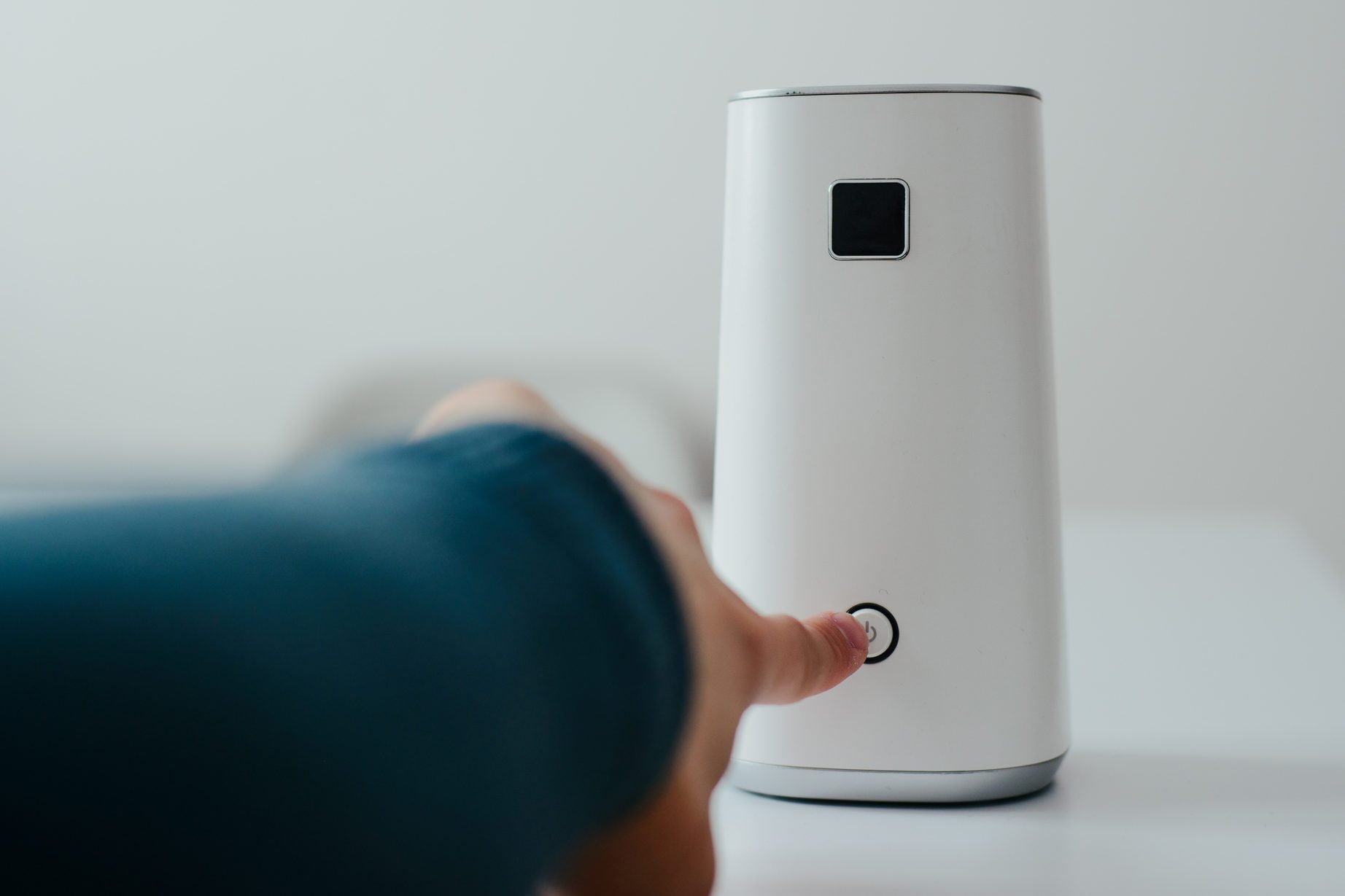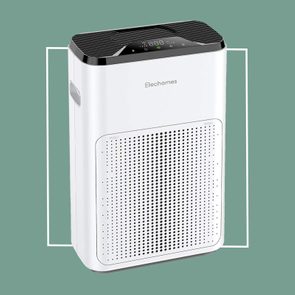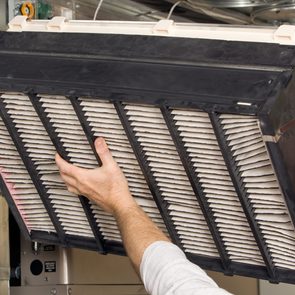Do Personal Air Purifiers Work? What to Know Before You Buy
Updated: Mar. 12, 2021
A personal air purifier can improve the indoor air quality of your surroundings. Here's what makes some devices effective and others hazardous, plus what to look for when buying.
Why clean air is important
Air purification is a hot topic right now, largely because of the possibility of being infected with Covid-19 from respiratory droplets in the air.
But there are many other contaminants in the air we breathe, and while we’re all familiar with outdoor air pollution, most people don’t think too much about what’s in the air indoors, says indoor air quality scientist Richard Shaughnessy, who runs the Indoor Air Program at Tulsa University in Oklahoma.
According to the Environmental Protection Agency (EPA), biological contaminants in the air include bacteria, viruses, animal dander, house dust, mites, cockroaches, and pollen. Tobacco smoke, indoor fireplaces, and outdoor air pollution also contribute to poor indoor air quality, which can have both immediate and long-term health effects, per the EPA. (Learn more about indoor allergens.)
Poor indoor air quality can be especially troublesome for people with asthma or allergies. Allergens in the air can worsen both conditions.
So it makes sense that you want to keep the air around you as clean as possible, whether you’re out and about or sitting at the desk in your home office. But do personal air purifiers do the job? Here’s everything you need to know about personal air purifiers, including how they work, how safe they are, and the different types.
(Here’s how to tell who needs an air purifier.)
Wearable personal air purifiers
There are many devices on the market that you can wear on your body to clean the air around you. These often hang on a loop around your neck, like a necklace. The products typically use ionization to clean the air. It’s the same technology used in some plug-in air purifiers.
How do personal ionic air purifiers work?
Air purifiers that use ionization emit negative ions into the air, explains Emily Jones, a researcher in Harvard University’s T.H. Chan School of Public Health in Boston. You might recall from high school chemistry that atoms with a positive or negative charge are called ions, and negative and positive ions are attracted to each other. When the purifier emits ions, it causes particles, like viruses, animal dander, or particulate pollution, to be charged. (Find out if UV air purifiers really work for viruses.)
In the larger room air purifiers, these particles are sometimes pulled back to a charged component in the air cleaner. But often these charged particles—those allergens you’re working hard to get rid of—will be pulled to surfaces in the room, says Jones.
Personal air cleaners that you wear around your neck claim to repel particles away from the wearer so they land on surfaces.
Are personal ionic air purifiers effective?
Ionizers can be effective at removing particles from the air, including viruses like SARS-CoV-2, the virus that causes Covid-19, says Shaughnessy. The problem, he explains, is that because they fall out of the air and land on surfaces, the particles are still in the room. This means that if they are brushed or kicked they could be brought back into the air. “There’s the potential for re-suspension with any disturbance,” he says.
Jones adds that the convenience of a tiny portable device may also be its downfall. “It may not be able to clean very much air due to its small size,” she says. (These are the household items poisoning your air.)
Are personal ionic air purifiers dangerous?
The negative ions that the air purifiers emit are not dangerous to your health, according to a 2018 study in the International Journal of Molecular Sciences.
The problem with ionizers, however, is they can generate ozone, which is a respiratory hazard. “I would not recommend that people wear an ionizer around their neck due to potential for ozone exposures,” Jones says.
Shaughnessy notes that ozone also can cause secondary reactions that create other harmful substances, such as formaldehyde.
“If I was concerned about inhaling particulate pollution, I would personally opt for a good mask rather than an ionizer necklace,” says Jones.
(Here’s what to know about ozone air purifiers.)

Desktop personal air purifiers
If you’re worried about the air in your close vicinity and you’ll be staying in one spot, like at a desk or in a bed, you could opt for a desktop personal air purifier. These devices are smaller than room-sized air cleaners but still sit on a surface—unlike necklace personal air purifiers, they’re not designed to be worn.
(This is how your house is making you sick.)
How do desktop personal air purifiers work?
There are many types of desktop personal air purifiers. Most use a filter system to catch particles, like viruses, pollen, and tiny inhalable particles that can be harmful to your health (known as PM2.5). The device then releases the clean air back into the room.
Some personal air purifiers include an activated carbon filter, which can capture gases, according to the EPA. Others include ionization technology like that used in necklace air purifiers.
These air purifiers aren’t limited to the office. While they can sit on a desk, they also work on a bedside table or on the floor next to a chair. You can easily unplug these devices and move them around.
Are desktop personal air purifiers effective?
How well a desktop personal air purifier works depends on its particular specifications and the size of the area you are targeting, says Shaughnessy. A small air purifier will be less effective in a large room than a bigger model, for instance.
For all filter-based air purifiers, regardless of the size, he recommends opting for a high-efficiency particulate air (HEPA) filter, which is recognized among air quality experts as the gold standard. “There’s nothing fancy about it,” says Shaughnessy. “But it’s very effective for removing smaller particles.”
A HEPA filter is a pleated mechanical air filter that, to meet the standard, must be capable of removing at least 99.97 percent of dust, pollen, mold, bacteria, and any airborne particles with a size of 0.3 microns. They are even more effective at capturing larger particles.
Another important feature to look out for is the clean air delivery rate (CADR). “When you buy an air cleaner, you’ll see a label on the box that will give you the CADR,” says Shaughnessy, adding that it should also indicate what size of room the air cleaner is applicable for.
While a higher CADR is generally better, if you’re only targeting a small space, a lower CADR might be sufficient. “As long as it is compatible with the size of the room that it’s recommended for, you’re going to make a difference,” says Shaughnessy.
(Got pets? These are the best air purifiers for pets.)
Are personal desktop air purifiers dangerous?
Desktop air purifiers that use HEPA filters are not dangerous. In fact, any air purifier with a HEPA filter can be a useful tool to clean the air, says Jones.
However, if the device you are using also emits negative ions, it could be potentially harmful due to its potential to produce ozone as a byproduct.
Don’t forget: Air purification is a last resort when it comes to clean air. First, try to eliminate the source of the contamination. So, for instance, stop smoking indoors (or anywhere, for that matter; your health will thank you). From there, freshen up your indoor air with ventilation. Finally, give a personal air purifier a try. “They could be a tool that’s useful for people who can’t alter their environments in any other ways,” says Jones.
(These are the best plants to detoxify your home, according to NASA.)
The last word
Personal air purifiers can help improve the indoor air quality of your home or your nearby surroundings. They work to remove particles like dust, pollen, allergens, mold, and smoke.
It’s important to note that air purifiers are not a permanent fix to improving air quality. There are basic home-cleaning techniques, such as cleaning your floors, avoid smoking indoors, and maintaining a healthy humidity level at home (30 to 50 percent), that can also help.
If you have asthma, allergies, or other health issues, talk with your doctor to see how to further improve your indoor air quality.
Next, here are more ways to improve indoor air pollution at home.


















